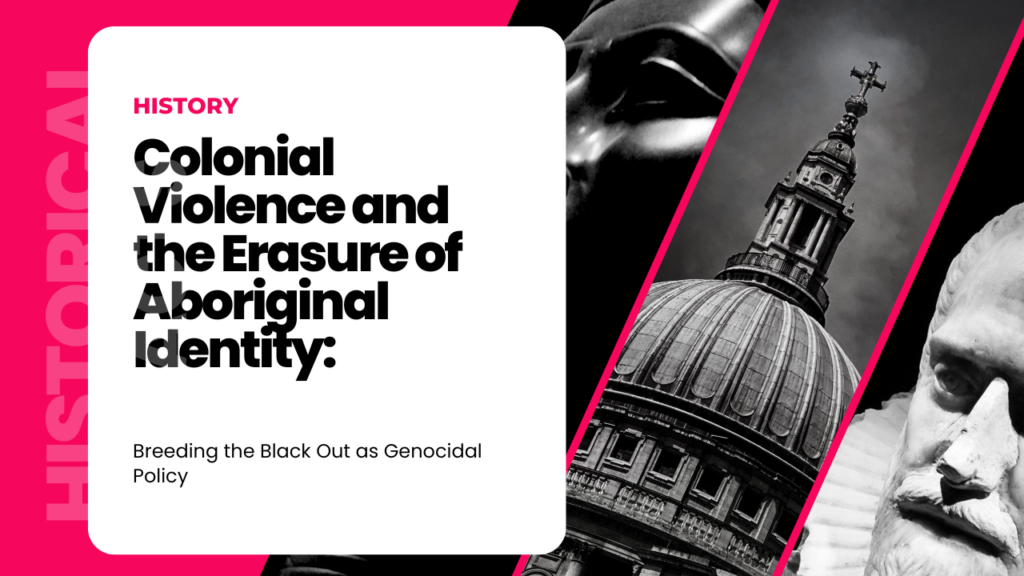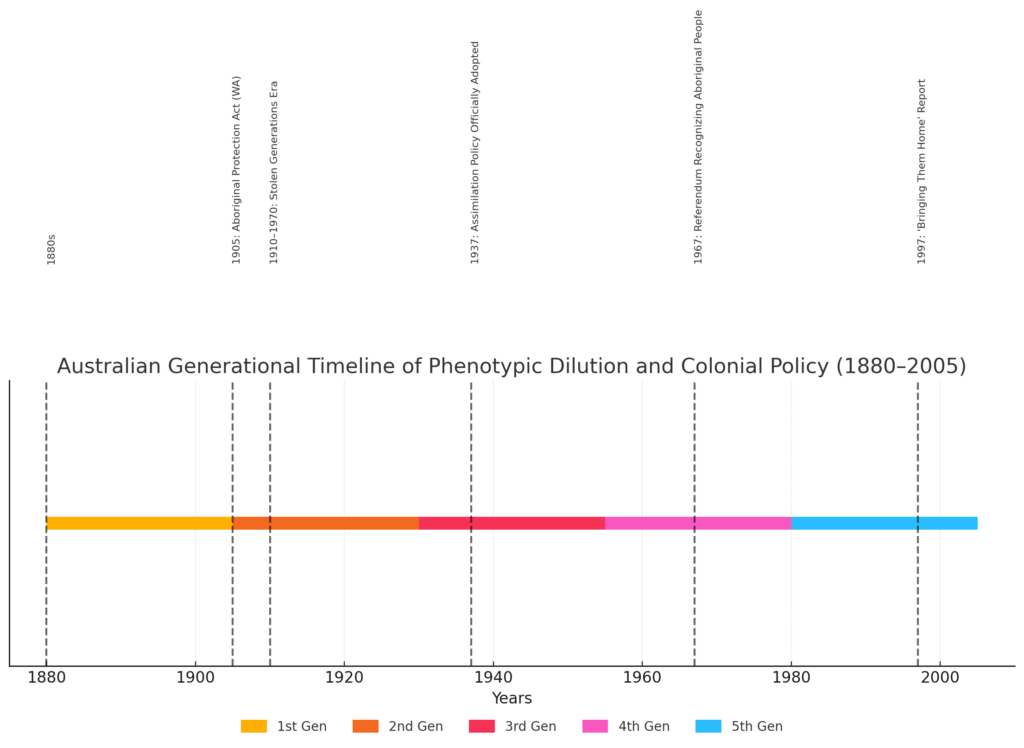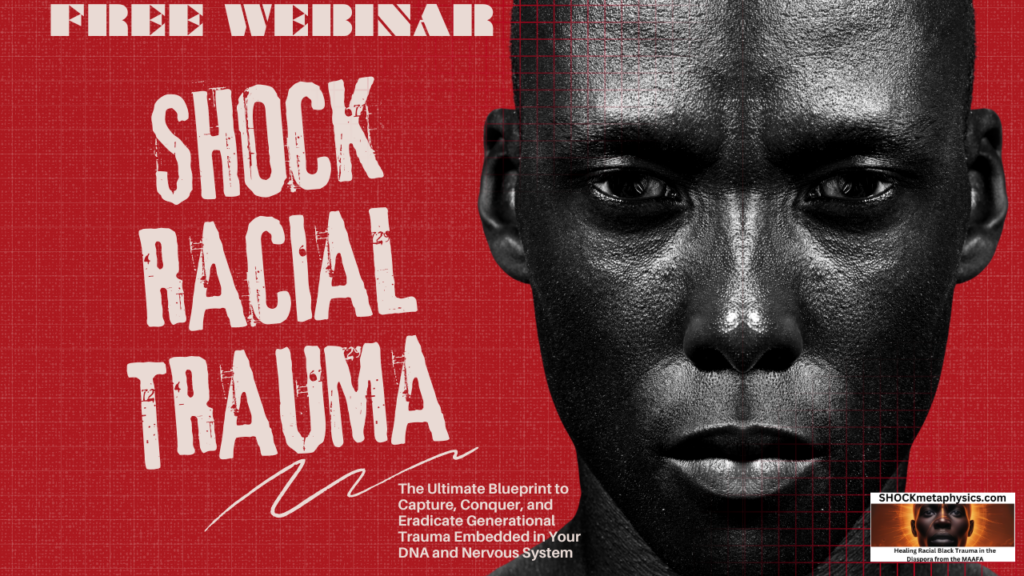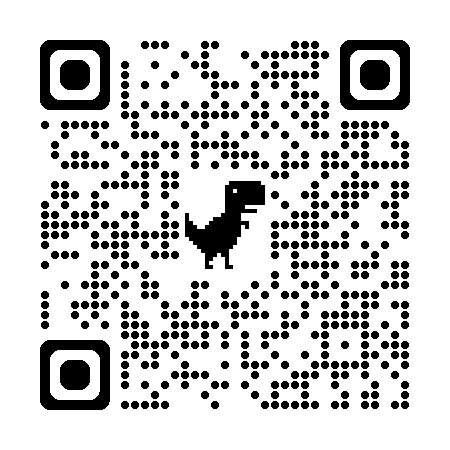
Powered By BlackTraumaGPT.com
Researched and Curated By Rev. Dr. Philippe SHOCK Matthews – https://solo.to/revshock | https://linktr.ee/revshock (Black Trauma and Mental Health Specialist | Prompt Eng | GPT Dev | Research Scientist | Africana Phenomenologist | Black Mental Health Podcast Host | FREE Webinar)
Medase Family!
In exploring the intricate history of colonization and its consequences, it becomes necessary to analyze the calculated and deliberate policies that aimed to erase Aboriginal phenotypes in Australia through forced biological assimilation. This analysis, deeply informed by Africana phenomenology, reveals not merely the biological transformations imposed upon Aboriginal populations but also exposes the profound existential assault inflicted upon their collective identity and cultural existence.
The research by Rev. Dr. Philippe SHOCK Matthews provides a rigorous exploration of how colonial assimilation policies systematically targeted Indigenous Australians with the explicit intention of genetic dilution. This approach strategically manipulated biological processes to eradicate Aboriginal features over successive generations. Through these assimilation strategies, particularly between 1880 and 1970, the Australian government explicitly sought to create conditions that would progressively eliminate distinctive Aboriginal phenotypes, thereby forcibly integrating Indigenous populations into a perceived white European standard.
Historical records illuminate that assimilation policies operated on an anticipated timeline of approximately three to five generations, translating to roughly 75-150 years. Such timelines were not randomly established but emerged from meticulous planning, demonstrating colonial intent grounded in eugenic ideologies. The infamous phrase articulated by A.O. Neville, the Chief Protector of Aborigines, to “breed out the color” encapsulates the biopolitical aspirations embedded within these assimilationist policies. Neville and contemporaries perceived Aboriginal populations as biologically inferior, using pseudoscientific justification to enforce aggressive assimilation through the forced removal of Aboriginal children from their communities—a practice extensively documented in the landmark report “Bringing Them Home” by the Human Rights and Equal Opportunity Commission (1997).

This forced assimilation was not merely social; it was profoundly biological. Genetic studies of polygenic traits, especially skin color, indicate that significant visible transformations can manifest rapidly across generations. Norrgard’s (2008) foundational work illustrates the hereditary complexities of phenotypic expression, clarifying how rapid genetic shifts could feasibly occur through calculated interbreeding policies. Indeed, this aligns with historical accounts that Aboriginal descendants subjected to sustained forced intermarriage demonstrated significant phenotypic shifts toward European features within only a few generations. These genetic alterations were carefully choreographed, reflecting similar strategic breeding methodologies historically applied in animal husbandry practices, further underscoring the troubling ethical parallels between human and animal management under colonial systems.
The systematic review and legal analysis presented by Matthews validate that Australia’s assimilationist practices fulfill several crucial criteria under international law, specifically under the United Nations Genocide Convention of 1948. The convention outlines acts such as forcibly transferring children from one group to another or imposing measures intended to prevent births within a group as constitutive of genocide. This classification demands recognition that genocide extends beyond mass physical extermination and includes deliberate biological and cultural erasure. The Australian policies explicitly intended not only to remove Aboriginal phenotypes but also systematically to dismantle Aboriginal cultures and familial bonds.
Contextualizing these assimilation policies within broader global phenomena highlights patterns observed across other colonized contexts, such as Latin America’s “blanqueamiento” or whitening and the systematic cultural and genetic erasure of Native American communities in North America. Comparative analyses reveal a broader colonial logic of biological dominance and cultural erasure, positioning Australia’s historical actions within a broader global continuum of genocidal colonial practices.
Moreover, Matthews’ research highlights critical health implications from this genetic dilution. Studies such as Cox et al. (2013) document unique genetic variants among Aboriginal populations linked to their historical isolation and recent forced admixture with Europeans. These genetic shifts have increased susceptibility to particular health conditions, underscoring the enduring physical consequences of colonial genetic manipulation. Rae et al. (2017) further argue the necessity of tailored healthcare practices sensitive to the distinct genetic profiles and historical trauma borne by Indigenous Australians. Thus, genetic dilution represents not only cultural and social harm but ongoing threats to physical health and wellbeing.
Here is a visual representation of the approximate generational timeline, assuming an average of 25 years per generation. It illustrates how phenotypic dilution—such as what occurred in the Australian context—can unfold over 3 to 5 generations, or roughly 75 to 125 years. This visualization underscores the slow but intentional pace at which cultural and biological assimilation strategies were executed under colonial and assimilationist policies.

From an Africana phenomenological perspective, this phenomenon resonates profoundly as it embodies an existential crisis—a forced disconnection from ancestral lands, spirituality, language, and cultural memory. Africana phenomenology provides a framework emphasizing that colonization is not only a historical occurrence but an ongoing embodied trauma that deeply affects how individuals experience identity, belonging, and their existence within the world. The forced intergenerational displacement and dilution of genetic markers are seen as more than mere biological transformations; they represent a deliberate colonial assault on Indigenous being, producing trauma that remains manifest in contemporary Aboriginal identities and community structures.
Firsthand narratives such as Doris Pilkington’s “Follow the Rabbit-Proof Fence” (1996) vividly illustrate this existential struggle. Pilkington chronicles the resilience of three Aboriginal girls escaping forced assimilation, symbolically challenging policies designed to sever their connections to cultural and ancestral identities. Such narratives reinforce that while genetic dilution policies aimed for complete cultural and biological erasure, Indigenous resistance has continually asserted cultural persistence, maintaining identity despite systemic assaults.
Critical to contemporary discussions are the implications for cultural and genetic conservation. The rapid genetic changes documented in Aboriginal populations mirror phenomena observed within animal breeding studies, where intentional crossbreeding rapidly alters genetic diversity. However, human populations cannot ethically be subjected to selective breeding or genetic conservation in the literal sense. Instead, Matthews highlights the urgency for cultural practices to reinforce heritage connections, thereby counteracting historical erasure efforts through robust revitalization of cultural identities, languages, and practices.
In addressing potential counterarguments, one might assert that the integration of populations through intermarriage and cultural exchange naturally occurs throughout history, potentially viewing assimilation as merely an inevitable demographic shift. However, Matthews demonstrates through meticulous analysis that these assimilation policies were neither neutral nor passive occurrences. Instead, they were explicitly intentional, coercive, and aimed at the complete erasure of Indigenous existence, deliberately engineered within colonial frameworks of racial hierarchy and biopolitical governance.
Thus, recognizing these historical actions as genocide under international law is imperative, not merely for historical accuracy but also for justice and healing. Ongoing reconciliation efforts must confront these truths explicitly, acknowledging the deliberate, multi-generational colonial harm that continues to shape Aboriginal communities. Furthermore, there is an urgent need for expanded healthcare and policy frameworks that are culturally responsive and genetically informed, recognizing the sustained health impacts of colonial genetic interventions.
Matthews’ research ultimately insists on a profound reassessment of historical understandings of colonization, urging scholars, policymakers, and communities to recognize biological assimilation’s deliberate, systematic, and generational dimensions as an ongoing existential threat to Indigenous identities. The lasting impacts of these colonial practices necessitate not merely acknowledgment but actionable reparative justice, supporting Indigenous autonomy, cultural revitalization, and health initiatives addressing the legacy of genetic dilution and cultural disintegration.
Family, let us not merely recall this history but honor its complexities, engage critically with its consequences, and actively support continued Indigenous resilience and revitalization in the face of historical erasure.
READ THE FULL RESEARCH PAPER:
The Impact of Media-Induced Trauma Imprints on Black Communities: Racialized Violence, Historical Memory, and the Need for Resilient Narratives https://t.ly/zLOlk

FREE SHOCK RACIAL TRAUMA WEBINAR: http://shocktraumafreewebinar.com

“I just completed a brief session with ChatGPT-Black Trauma. Wow! The responses I got were soooooo helpfu!.” — John Jackson (Patreon Member)
At BlackTraumaGPT.com, we aim to foster healing, understanding, and empowerment within Black communities by providing culturally sensitive education, insights, and mental health resources. We aim to deepen the collective awareness of Black trauma’s historical roots and its contemporary manifestations while guiding individuals and communities toward paths of self-care, resilience, and holistic healing. By leveraging the wisdom of Africana phenomenology and the expertise of Black scholars, we support the transformation of trauma into strength, encouraging collective growth and thriving.
IT’S TIME TO BREAK BLACK TRAUMA! Heal Thyself @ BlackTraumaGPT.com http://blacktraumagpt.com/ ASK THE QUESTION(S)!
———————
Get Social with Doc SHOCK:
PATREON | ABOUT DR. SHOCK | FLY SOLO | ACADEMIC BIO | BLOG | BLACK TRAUMA PODCAST | ENDORSEMENT | THREADS | IG | FB PAGE | PRIVATE GROUP | X | LINKEDIN | TIKTOK | PINTEREST | BLACK TRAUMA GPT | BLACK AI CONSORTIUM | BOOKS BY DOC SHOCK

